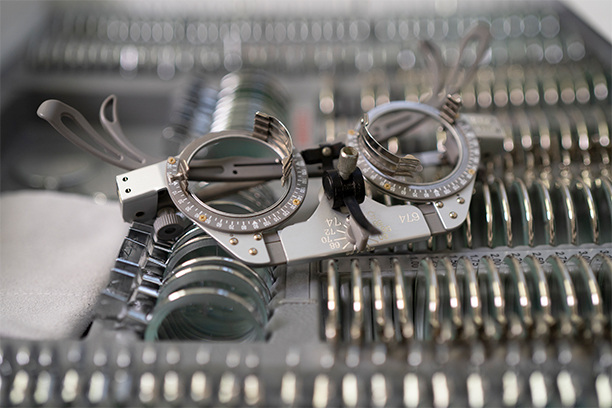- GlassesShop By FrameShop By StyleFeatured













When choosing glasses, it's easy to focus on style—color, shape, and how they look on your face. But to truly find a frame that fits, comfort and vision quality are just as important. Here are 9 key points to keep in mind before you commit to a new pair of frames.
1. Make sure the frame's center aligns with your PD (Pupillary Distance)
Optical alignment is key. Your pupils should align with the geometric center of the lenses, with only a small deviation (under 4–10mm). Misalignment can lead to visual distortions like prism effects.
2. Keep the vertex distance around 12–14mm
This is the space between your eye and the lens. Too far? You'll see the lens edge. Too close? Your lashes might brush against the lens. Around 12–14mm is the sweet spot for most face shapes in the U.S.
3. Maintain a pantoscopic tilt of about 6–10°
That slight tilt helps the lens sit naturally in your line of sight and improves overall vision. It also ensures the frame clears your brows and cheeks. Misalignment here? Consider adjusting the nose pads or switching frames.
4. Choose a nose bridge that fits comfortably
A good bridge keeps your glasses secure without pressure points. Too narrow? They pinch or ride high. Too wide? They slip down. Check fit without relying on the temples to hold the frame up.
5. Temple length matters more than you think
Temples should curve just over your ears—no pinching, no sliding. If they're too short or too long, you'll constantly be adjusting your glasses. And remember: check this while the tilt is correct!
6. Go with smaller frames if you have a high prescription
Stronger prescriptions = thicker lenses, especially at the edges. Smaller frames minimize distortion and weight, keeping your lenses clearer and your glasses more comfortable.
7. If you have high astigmatism, avoid rimless frames
Rimless lenses are more exposed and tend to reflect light at the edges, which can bother those with strong astigmatism. Full or semi-rimmed frames provide more stability and reduce unwanted reflections.
8. Don't choose highly curved (wraparound) frames unless necessary
Wraparound frames may look sporty, but they can cause image distortion unless specially made. For daily wear, a flatter frame shape offers better visual clarity.
9. For kids, one-piece bridge designs are best
Children's noses are still developing, and adjustable nose pads often don't sit well. One-piece molded bridges fit better, stay in place longer, and are more durable.
Final Thoughts
Your frames should do more than look good—they should support your vision and fit your lifestyle. By understanding these key factors, you'll be better equipped to find glasses that feel as great as they look.

